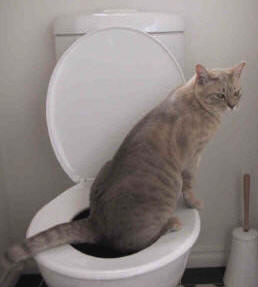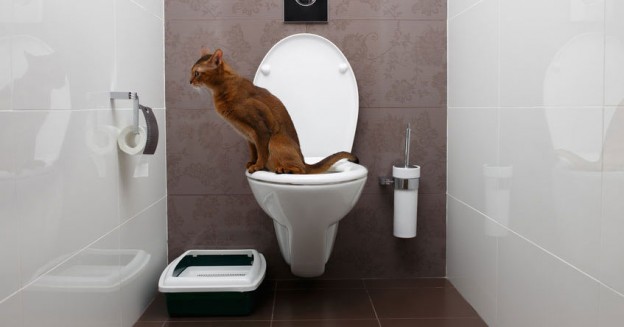What're your ideas regarding Don’t flush cat feces down the toilet?

Introduction
As pet cat owners, it's important to be mindful of how we get rid of our feline pals' waste. While it may seem convenient to purge pet cat poop down the toilet, this technique can have harmful effects for both the setting and human health.
Ecological Impact
Flushing feline poop introduces dangerous microorganisms and parasites right into the water, posing a significant risk to aquatic environments. These pollutants can negatively influence aquatic life and compromise water top quality.
Wellness Risks
Along with environmental worries, flushing feline waste can also pose health threats to people. Cat feces may consist of Toxoplasma gondii, a parasite that can trigger toxoplasmosis-- a potentially serious disease, particularly for expecting females and people with damaged body immune systems.
Alternatives to Flushing
Luckily, there are more secure and a lot more liable means to deal with cat poop. Think about the complying with alternatives:
1. Scoop and Dispose in Trash
The most usual technique of dealing with cat poop is to scoop it right into a naturally degradable bag and throw it in the trash. Be sure to make use of a committed trash inside story and throw away the waste quickly.
2. Usage Biodegradable Litter
Opt for naturally degradable cat trash made from materials such as corn or wheat. These trashes are eco-friendly and can be safely thrown away in the garbage.
3. Bury in the Yard
If you have a backyard, take into consideration hiding pet cat waste in an assigned area far from veggie gardens and water sources. Be sure to dig deep adequate to avoid contamination of groundwater.
4. Install a Pet Waste Disposal System
Buy a family pet garbage disposal system particularly made for cat waste. These systems make use of enzymes to break down the waste, reducing smell and environmental effect.
Final thought
Liable animal ownership expands past offering food and shelter-- it likewise entails correct waste administration. By avoiding purging cat poop down the bathroom and selecting different disposal methods, we can minimize our environmental impact and safeguard human health and wellness.
Why Can’t I Flush Cat Poop?
It Spreads a Parasite
Cats are frequently infected with a parasite called toxoplasma gondii. The parasite causes an infection called toxoplasmosis. It is usually harmless to cats. The parasite only uses cat poop as a host for its eggs. Otherwise, the cat’s immune system usually keeps the infection at low enough levels to maintain its own health. But it does not stop the develop of eggs. These eggs are tiny and surprisingly tough. They may survive for a year before they begin to grow. But that’s the problem.
Our wastewater system is not designed to deal with toxoplasmosis eggs. Instead, most eggs will flush from your toilet into sewers and wastewater management plants. After the sewage is treated for many other harmful things in it, it is typically released into local rivers, lakes, or oceans. Here, the toxoplasmosis eggs can find new hosts, including starfish, crabs, otters, and many other wildlife. For many, this is a significant risk to their health. Toxoplasmosis can also end up infecting water sources that are important for agriculture, which means our deer, pigs, and sheep can get infected too.
Is There Risk to Humans?
There can be a risk to human life from flushing cat poop down the toilet. If you do so, the parasites from your cat’s poop can end up in shellfish, game animals, or livestock. If this meat is then served raw or undercooked, the people who eat it can get sick.
In fact, according to the CDC, 40 million people in the United States are infected with toxoplasma gondii. They get it from exposure to infected seafood, or from some kind of cat poop contamination, like drinking from a stream that is contaminated or touching anything that has come into contact with cat poop. That includes just cleaning a cat litter box.
Most people who get infected with these parasites will not develop any symptoms. However, for pregnant women or for those with compromised immune systems, the parasite can cause severe health problems.
How to Handle Cat Poop
The best way to handle cat poop is actually to clean the box more often. The eggs that the parasite sheds will not become active until one to five days after the cat poops. That means that if you clean daily, you’re much less likely to come into direct contact with infectious eggs.
That said, always dispose of cat poop in the garbage and not down the toilet. Wash your hands before and after you clean the litter box, and bring the bag of poop right outside to your garbage bins.
https://trenchlesssolutionsusa.com/why-cant-i-flush-cat-poop/

I came across that article about Can You Flush Cat Poop Down The Toilet? while perusing the search engines. Remember to take the opportunity to promote this entry if you liked it. We love reading our article about Can You Flush Cat Poo or Litter Down the Toilet?.
Book Today